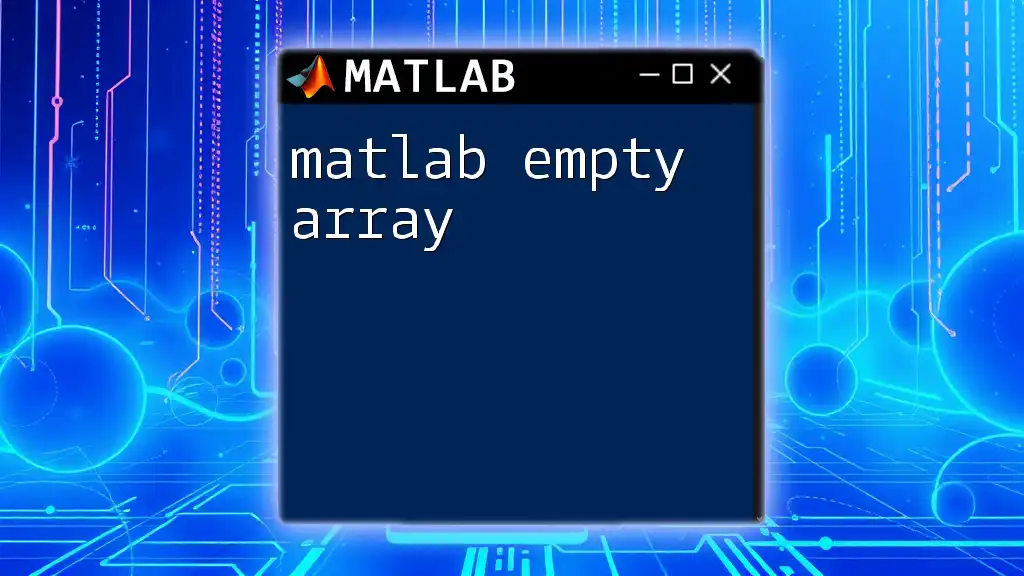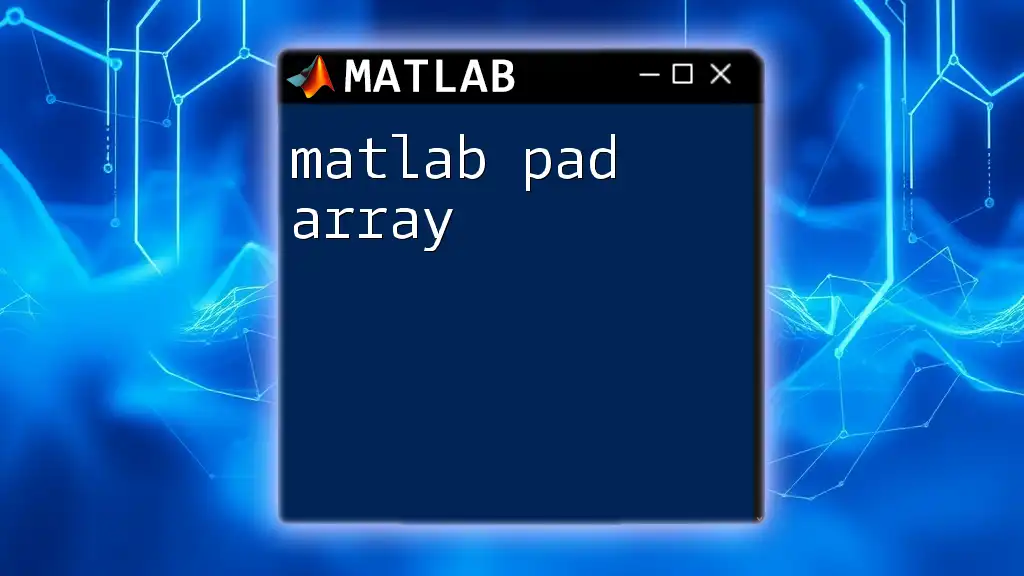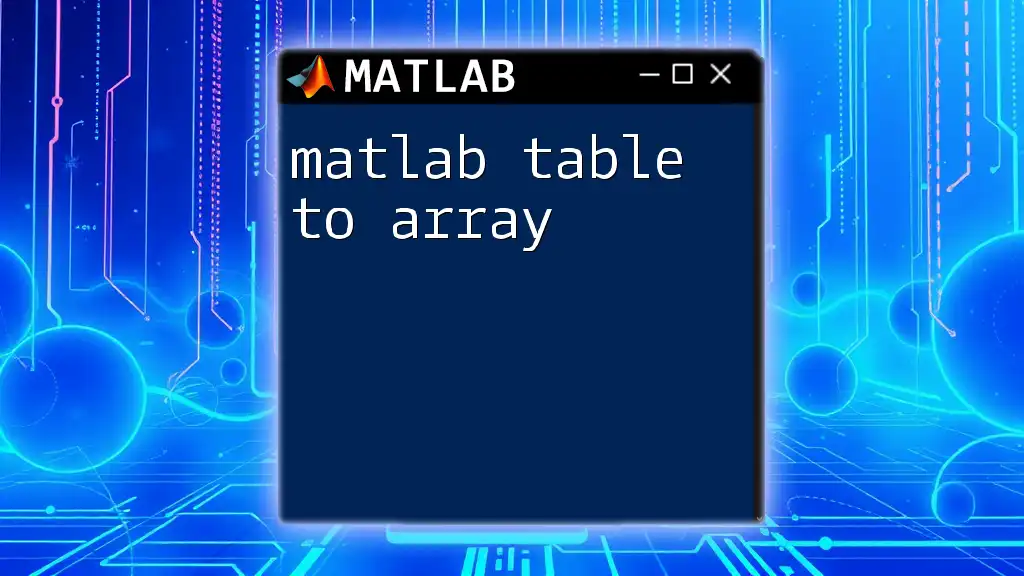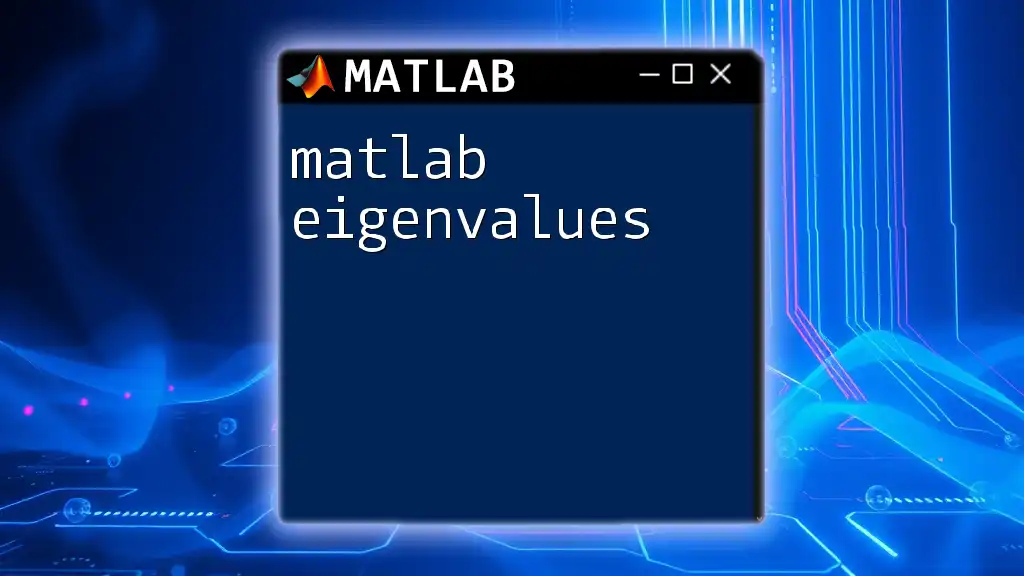In MATLAB, an array can be defined using square brackets to enclose a sequence of numbers, either as a row vector or a column vector. Here's an example:
% Row vector
rowArray = [1, 2, 3, 4, 5];
% Column vector
colArray = [1; 2; 3; 4; 5];
Understanding Arrays in MATLAB
What is an Array?
An array in MATLAB is a data structure that can store multiple values of the same type in a single variable. They are the fundamental building blocks of MATLAB, enabling efficient numerical computations and data manipulation. MATLAB supports various types of arrays:
- 1-D Arrays: These can be viewed as vectors and contain a single row or a single column of elements.
- 2-D Arrays (Matrices): These extend the concept of 1-D arrays to two dimensions, forming a rectangular grid of elements.
- Multi-Dimensional Arrays: These can store data in more than two dimensions, useful for complex data representation like images or volumetric data.
Importance of Arrays
Arrays are crucial in MATLAB for numerical computing. They allow for efficient data organization and manipulation, which is essential in mathematical modeling, simulations, data analysis, and algorithm development. For instance, matrices are commonly used in linear algebra to solve systems of equations, perform transformations, and more.

How to Define an Array in MATLAB
Creating a 1-D Array
Using Square Brackets
One of the simplest ways to create a 1-D array in MATLAB is by utilizing square brackets. This allows you to specify each element manually.
one_d_array = [1, 2, 3, 4, 5];
In this code snippet, `one_d_array` is defined with five integer elements. Each value is separated by a comma.
Using the `linspace` Function
The `linspace` function is an elegant method for generating linearly spaced vectors. It is particularly useful when you need an array of evenly spaced numbers.
one_d_array_linspace = linspace(1, 10, 5);
This will create an array with 5 values starting from 1 and ending at 10, with equal spacing between them. In this case, the output will be `[1, 3.25, 5.5, 7.75, 10]`.
Creating a 2-D Array (Matrix)
Using Square Brackets
Defining a 2-D array, or matrix, is quite similar to creating a 1-D array, but you separate rows with semicolons.
two_d_array = [1, 2; 3, 4; 5, 6];
Here, `two_d_array` has three rows and two columns. This format allows for clear representation of matrix data.
Using the `zeros`, `ones`, and `eye` Functions
MATLAB provides several built-in functions to create specialized matrices conveniently:
zeros_array = zeros(3, 3); % Creates a 3x3 matrix of zeros
ones_array = ones(2, 4); % Creates a 2x4 matrix of ones
identity_array = eye(3); % Creates a 3x3 identity matrix
These functions are particularly useful for initializing matrices before performing operations.
Creating Multi-Dimensional Arrays
Using `rand` or `randn` Functions
To define a multi-dimensional array, you can use the `rand` or `randn` functions. The `rand` function generates uniformly distributed random numbers, while `randn` produces normally distributed numbers.
multi_d_array = rand(3, 3, 2); % Creates a 3x3x2 random array
This creates a 3x3 matrix for each of the two layers in the third dimension, making it suitable for representing complex data structures.
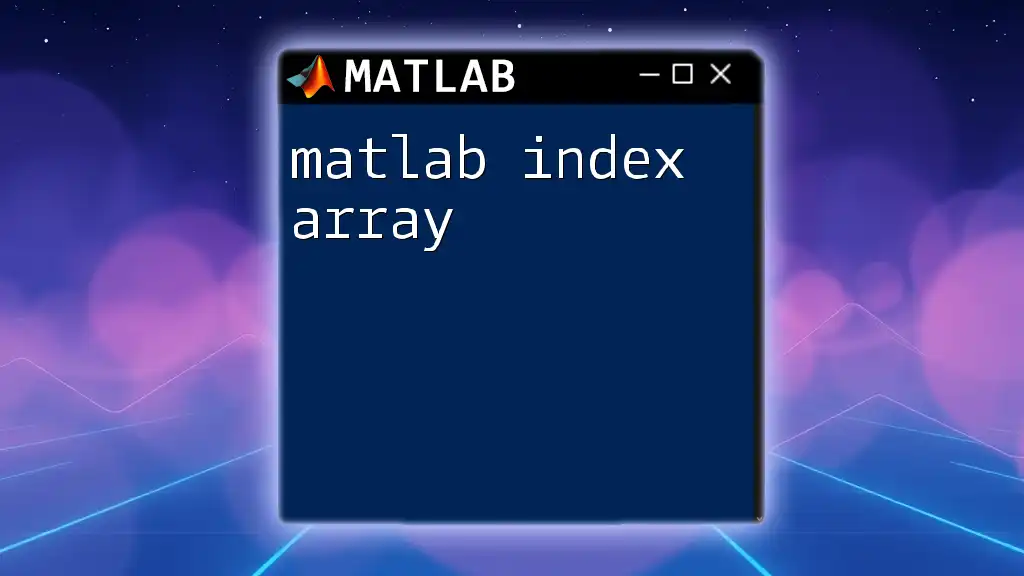
Accessing and Modifying Array Elements
Indexing Basics
Accessing elements within an array in MATLAB hinges on understanding indexing. MATLAB utilizes 1-based indexing, which means the first element is referred to as index 1.
first_element = one_d_array(1); % Accesses the first element
second_element = two_d_array(2, 1); % Accesses the element at the second row, first column
These indexing methods allow you to retrieve specific values quickly.
Modifying Array Elements
Modifying array values is straightforward. You can assign a new value to an existing index directly:
two_d_array(1, 2) = 10; % Changes the value at first row, second column to 10
Understanding how to modify arrays effectively is essential, especially in iterative algorithms or data processing tasks.

Common Operations on Arrays
Arithmetic Operations
MATLAB allows for element-wise operations, which means you can perform calculations on corresponding elements of two arrays with matching dimensions effortlessly.
result_array = two_d_array + 5; % Adding a scalar to each element
elementwise_mult = two_d_array .* two_d_array; % Element-wise multiplication
These basic operations are vital for matrix manipulations and mathematical computations.
Array Functions
MATLAB also offers several useful functions to interact with arrays. Some of the most common include:
- `size`: Returns the dimensions of the array.
- `length`: Provides the length of the largest dimension.
- `sum`: Computes the sum of array elements.
- `mean`: Calculates the average value of array elements.
Example usage:
array_size = size(two_d_array); % Get size of the array
total_sum = sum(one_d_array); % Calculates the sum of all elements in one_d_array
Utilizing these functions can enhance your ability to analyze and manipulate data.

Best Practices for Defining and Using Arrays
Efficient Memory Management
When working with large datasets, memory management becomes crucial. Preallocating an array to its desired size before filling it can significantly improve performance. For instance:
result_array = zeros(1, 1000); % Preallocation for a 1x1000 array of zeros
This prevents MATLAB from resizing the array multiple times during a loop, leading to improved efficiency.
Avoiding Common Mistakes
Common pitfalls include:
- Forgetting to use proper indexing, which can lead to errors.
- Mixing data types within an array, as MATLAB arrays are type-specific.
To debug array issues effectively, always check dimensions and corresponding data types. Using functions like `whos` can help you investigate variable characteristics.

Conclusion
Defining and using arrays in MATLAB is fundamental to effective numerical computing. From creating 1-D arrays to handling multi-dimensional matrices, understanding the core principles will significantly enhance your MATLAB proficiency. Practice these concepts with various examples and problem sets to reinforce your learning and build confidence in using MATLAB arrays.

Additional Resources
For further exploration of MATLAB and array manipulation, consider checking out the MATLAB documentation, community forums, or introductory MATLAB courses. These resources can provide you with deeper insights and advanced techniques, further enhancing your skill set in numerical computing.









